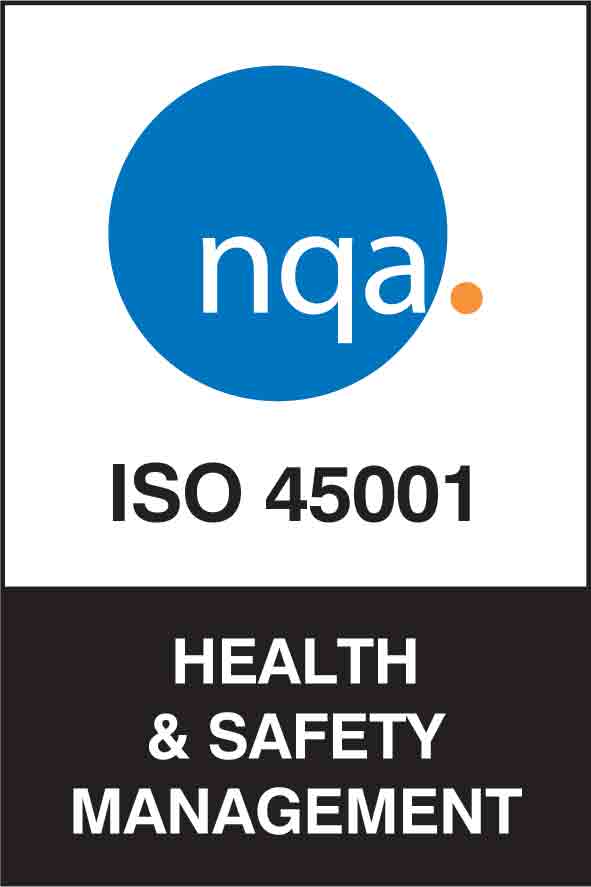BLOG
Post-COVID competence | Are your employees still health and safety aware?
Written on 9 July 2021

For businesses, adapting to the full reopening of society will be a significant task. Amongst more immediate challenges such as return to work planning and wrestling with confusing government guidance, employers must also take the time to reflect on how the last 15 months have impacted their employees, both personally and professionally. This includes reviewing employees’ ‘competence’.
The Health and Safety Executive (HSE) describes competence as “the combination of training, skills, experience and knowledge that a person has and their ability to apply them to perform a task safely”. Other factors, such as attitude and physical ability, may also affect an employee’s competence.
In the words of Former HSE Chair, Judith Hackitt, competence is “the ability for every director, manager and worker to recognise the risks in operational activities and then apply the right measures to control and manage those risks”.
Like any other skill, over time, individuals’ health and safety competence may become ‘rusty’ if not exercised. If employees don’t apply this skill on a regular basis – as will be the case for homeworkers and those on furlough – they may quickly become out of practice. This can lead to complacency, and accidents may follow.
What’s more, the workplace may be different to how employees left it, and there may be new hazards present that they will need to be aware of in order to work safely.
Can employees still recognise workplace risks? Are the measures needed to manage those risks still being applied? In short, are your employees still in a position to do their jobs without causing harm to themselves and/or others?
If not, what support is needed to bring employee competence back up to pre-pandemic levels?
What the law says
Under the Health and Safety at Work etc Act (HSWA) 1974, all employers have a duty, so far as is “reasonably practicable”, to protect the health, safety and welfare of persons at work. As part of this duty, you must provide employees (as well as workers, contractors and self-employed people undertaking work for you) with the information, instruction and training necessary to undertake their job safety.
This will typically include the hazards and risks they may face, the measures in place to deal with those hazards and risk, and how to follow any emergency procedures.
The Management of Health and Safety at Work Regulations 1999 also require that employers carry out a “suitable and sufficient” risk assessment of their activities. This assessment of risk involves taking account of employees’ capabilities. This is all the more important because a worker’s competence affects not only their safety and that of their colleagues but also the safety of others, such as visitors, contractors and members of the public. Indeed, the HSE says employers must ensure anyone performing a task on their behalf has the competence to do so without putting the health and safety of themselves or others at significant risk.
Conducting the required risk assessments will help you decide what level of information, instruction, training and supervision you need to provide.
Related Content
Do you need support?
Speak to us for an honest, no obligation chat on:
0345 226 8393 Lines are open 9am – 5pm
Why competence needs revisiting
The coronavirus pandemic has had a significant impact on workplaces, systems of work and indeed workers themselves. As a result, employers should consider the various impacts of the pandemic and whether the competence of your employees has been adversely affected as a result.
Areas to consider include:
The economic impact
A House of Commons research briefing on the economic impact of coronavirus says: “The magnitude of the recession caused by the pandemic is unprecedented in modern times. GDP declined by 9.8% in 2020, the steepest drop since consistent records began in 1948 and the most in over three hundred years on some estimates.”
The unprecedented recession has forced many businesses into restructuring and rationalising their operations. Of course, in scaling back activities, there may be a health and safety impact. Restructuring may, for example, lead to fewer staff, less equipment and training budgets being squeezed. Employees may also be in new roles, with new risks. All of this may impact employees’ competence.
For this reason, any pandemic cost-cutting must distinguish between any ‘nice to haves’ and non-negotiable legal requirements. The HSWA’s requirement to provide employees with information, instruction, training and supervision falls into the latter category, and employers’ duty to ensure staff are competent isn’t conditional on the state of the economy.
Also, bear in mind that putting training on a backburner of things you can’t afford right now may actually prove more costly in the long run, as accidents can incur significant expenses in relation to investigation time, employee absences, productivity losses, personal injury claims and reputational damage, amongst other things.
The individual impact
Again, with so many workers returning to employers’ premises for the first time in many months, their ability to perform at pre-pandemic levels may have been impaired.
Clearly, when we haven’t done something for a while, we are liable to become less good at it. Accordingly, it may be necessary to consider refresher training, which may be overdue given many workers have long been absent from their normal working environment. If employees have specific qualifications, check that they haven’t expired.
Don’t forget those working from home, as these individuals still fall within the scope of the HSWA. Have you provided them with sufficient information, instruction and training to enable them to work safely without direct supervision? Have they been made aware of the specific health and safety risks associated with homeworking and good practice for managing them? Have they received DSE training? Do they know how to report any issues?
Finally, if you are amongst the 56% of UK firms planning to hire new staff, these individuals will also require a proper induction so that they are competent and risk-aware from day one.
The impact on workplaces and work systems
The pandemic has radically changed workplaces. Socially-distanced work stations, protective screens and one-way systems have become the norm. However, these COVID controls may have introduced new hazards or impacted existing risk assessments.
Similarly, workers have had to adapt their ways of working. Very few employees are still working in exactly the same way as before the pandemic. Systems of work have had to change to mitigate the risk of infection. Commonplace changes include social distancing, staff bubbles, intensified cleaning regimes and added PPE requirements.
Given things have changed so much, its vital that the risks are reassessed. The risk assessment needs to consider how things have developed in the workplace and how employees fit into the changes made. Not only will roles likely have changed but the physical layout may be very different. Workers may be doing unfamiliar tasks, either due to systems changes and/or restructuring. Are they competent to undertake them safely?
Don’t forget to communicate your risk assessment’s findings and how things have changed. Make sure workers know what’s expected of them, where further details can be found and who they can go to for guidance, and ensure any training provided takes these new working methods into account.
Raise competence across your organisation with our support
At Ellis Whittam, we help employers to embed health and safety into their organisation and increase ownership, awareness and competence at every level through dedicated consultant support, award-winning risk management software, e-Learning and more.
For more information on our fixed-fee service, or to enquire about our expert training courses, call 0345 226 8393 or request your free consultation using the button below.
Sign up for the latest news & insights
Resources
Latest News & Insights

Do ADHD and autism qualify as a disability? | Understanding the Equality Act 2010 and new case law
BLOG Written on 14 July 2025 When an employee discloses that they have ADHD or autism, many employers find themselves asking: Is this classed as

Privacy vs practicality | Are you entitled to know the reason for an employee’s sickness absence?
BLOG Written on 14 July 2025 When an employee calls in sick, it’s natural for employers to want to understand the situation. However, questions around

Education | What school leaders need to know about September 2025 pay changes
BLOG Written on 9 July 2025 As we near the end of the summer term, headteachers, school business managers and senior Trust staff, along with

Employment Rights Bill Implementation Roadmap | Your quick guide to what’s coming when
BLOG Written on 4 July 2025 The Employment Law Bill promises the biggest shake-up of UK employment law in decades. Having recently cleared the Committee

Fewer lives lost | Key takeaways from the HSE’s 2024/25 fatal injury statistics
Blog Written on 3 July 2025 The Health and Safety Executive (HSE) has published its provisional fatal injury statistics for 2024/25, revealing a welcome decline

Candidate feedback | The secret superpower that can strengthen your recruitment process
BLOG Written by Danielle Fargnoli-Read on 25 June 2025 Let’s be honest – recruitment can be tough. You spend a lot of time writing job

New sentencing guidelines could see fines soar for very large organisations
BLOG Written on 23 June 2025 On 1 June 2025, the Sentencing Council introduced important amendments to its guidelines for health and safety, corporate manslaughter,

Don’t rely on AI | 5 areas where employers should exercise caution
BLOG Written by Amy Waters on 20 June 2025 Artificial Intelligence (AI) tools are transforming the way employers manage their operations, from streamlining recruitment to

Can employers lawfully demote employees?
BLOG When faced with performance or conduct issues, employers may look for alternatives to dismissal – one of which is demotion. This usually means reducing









